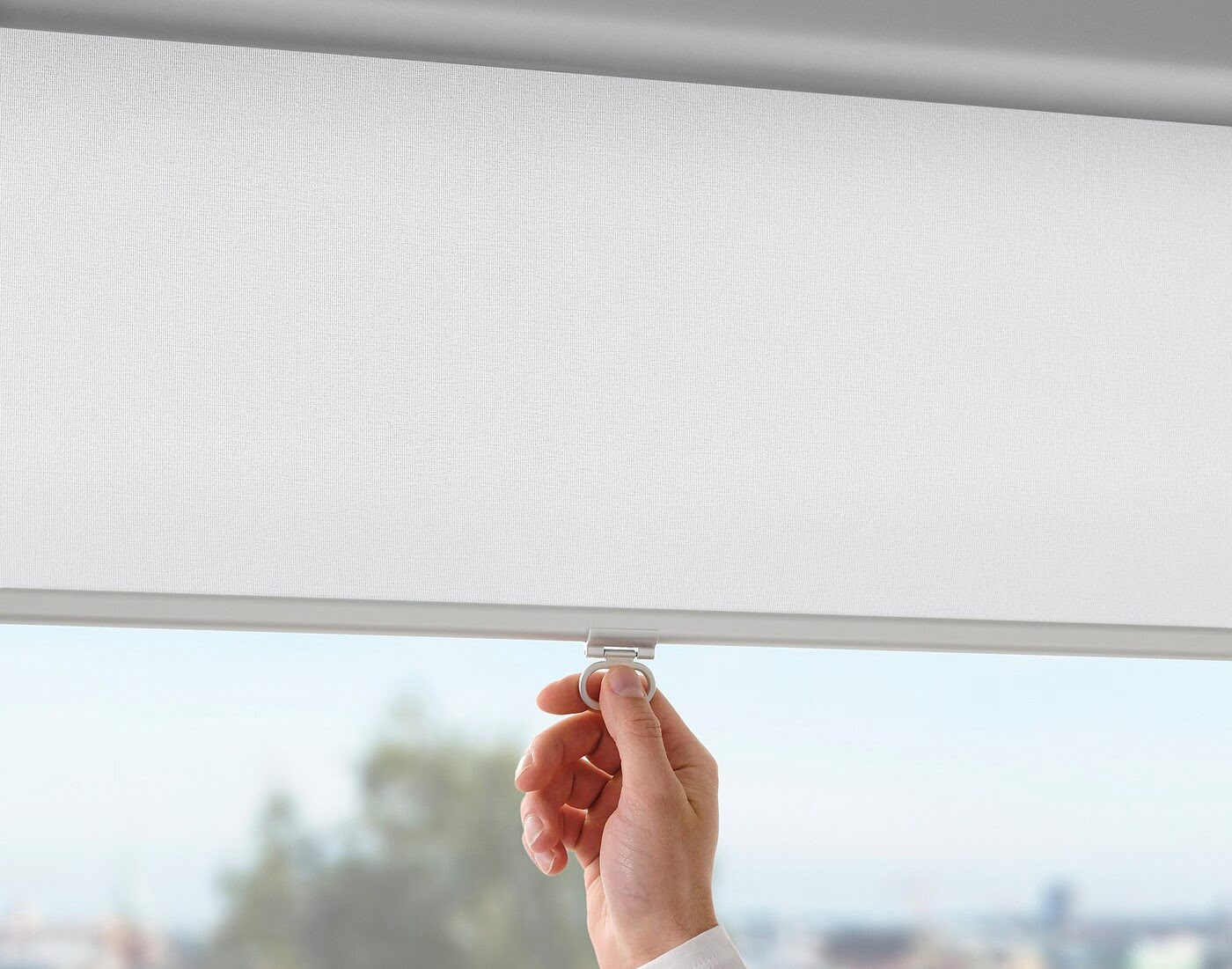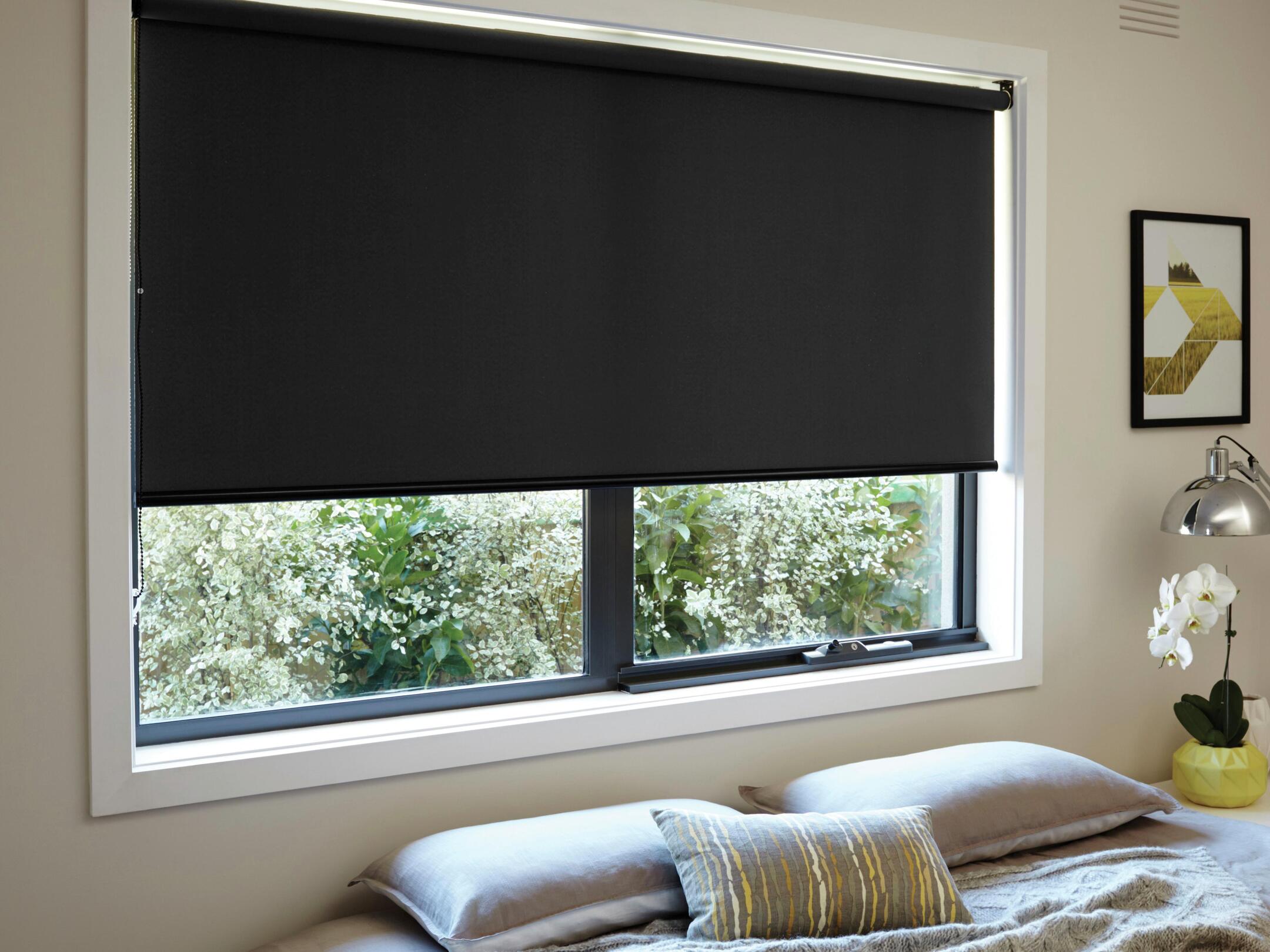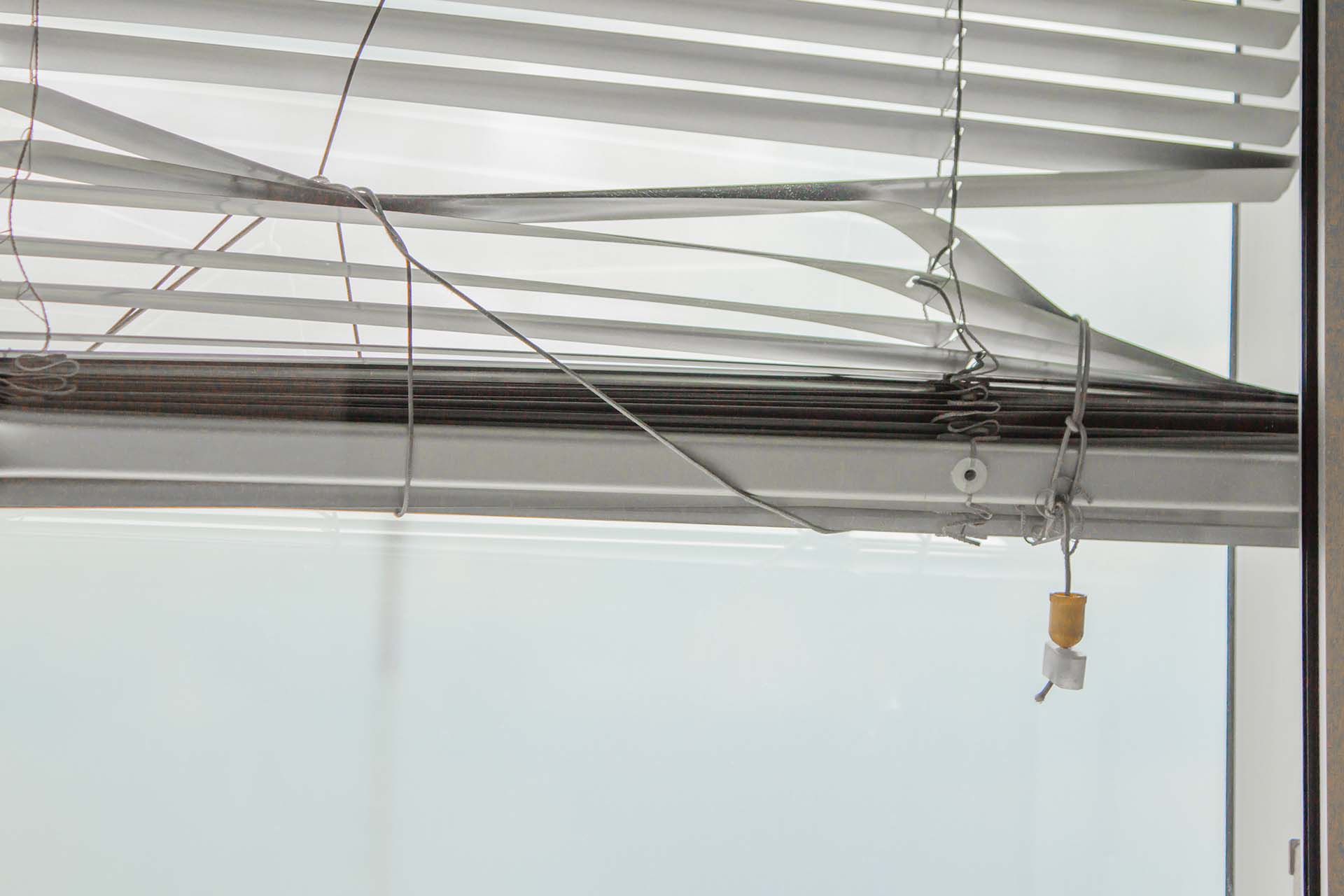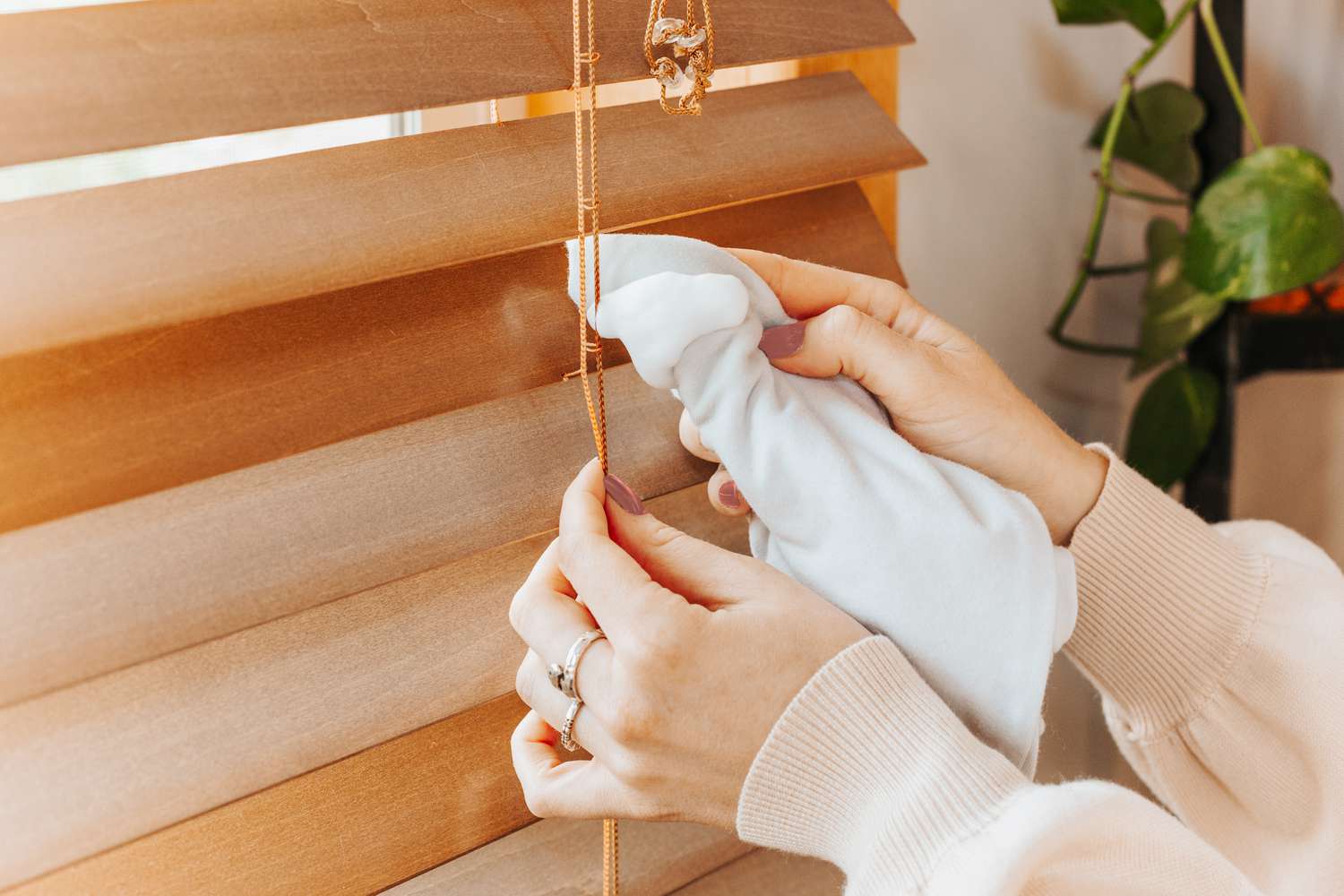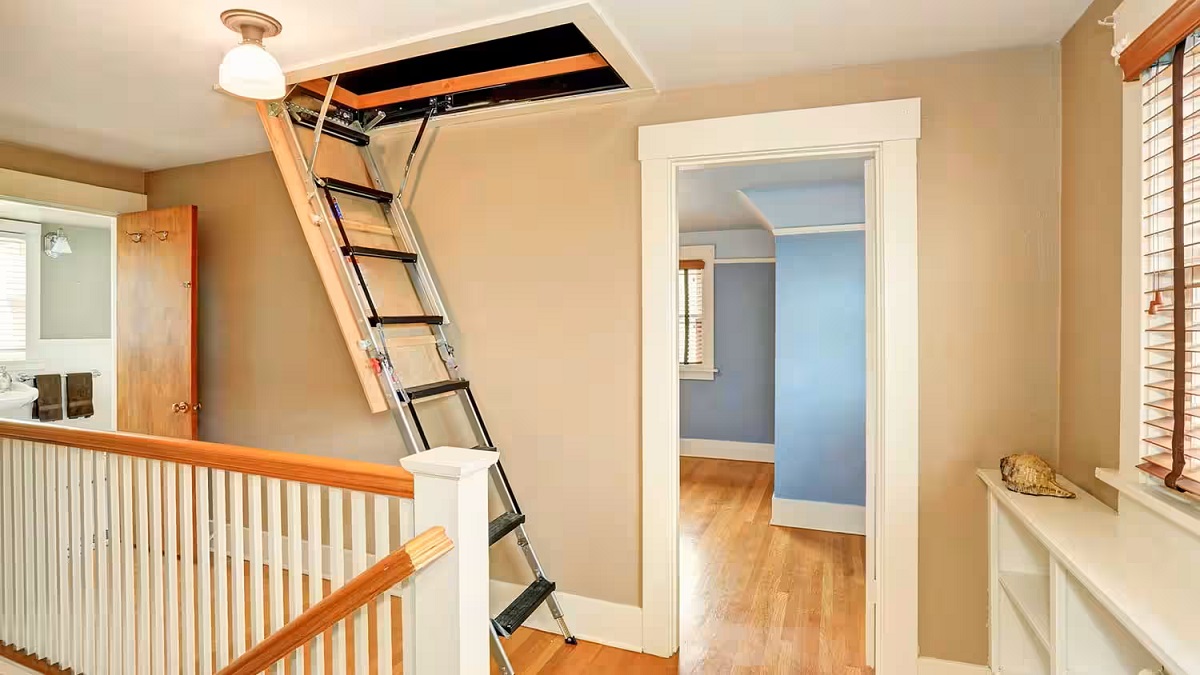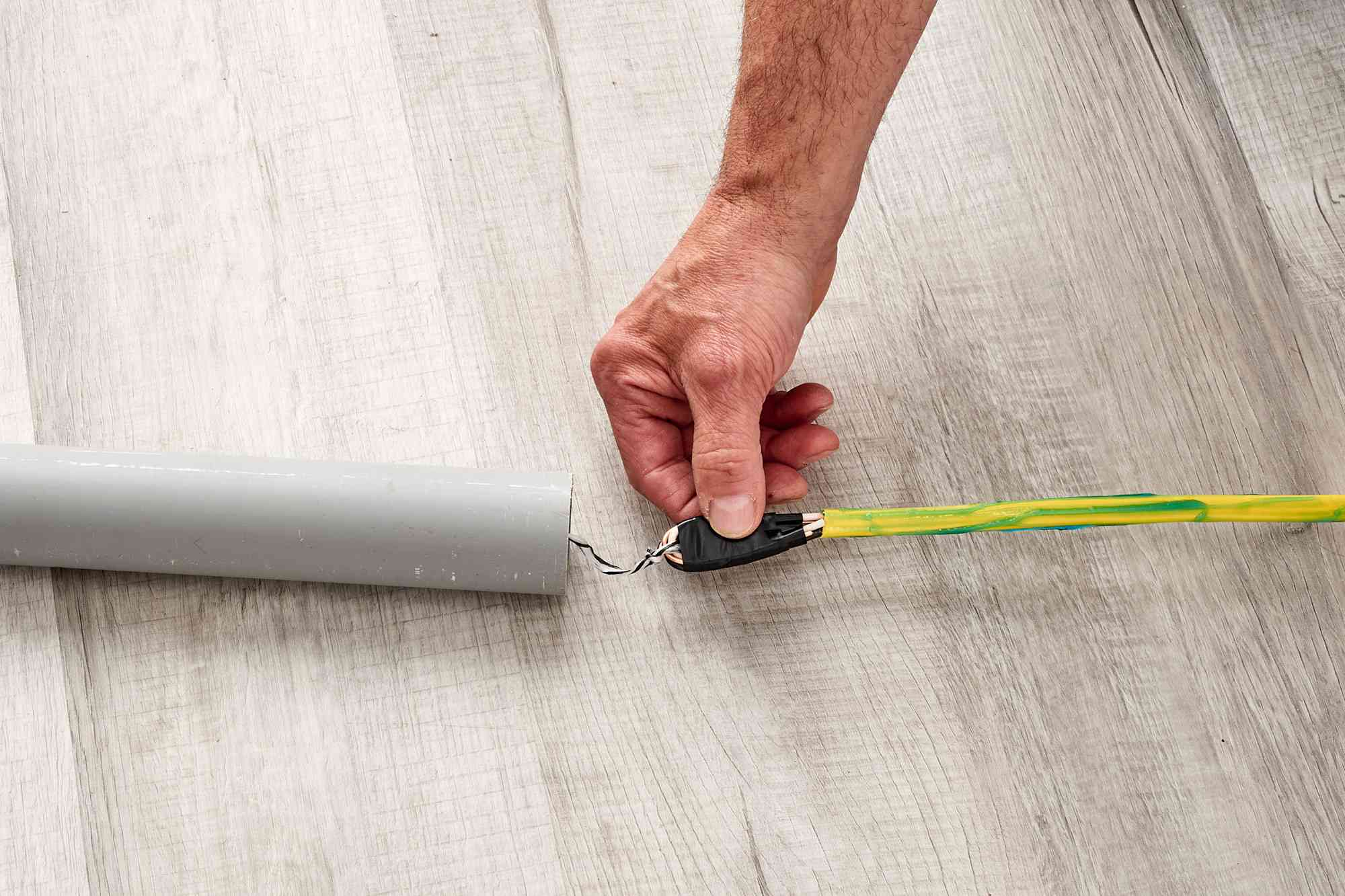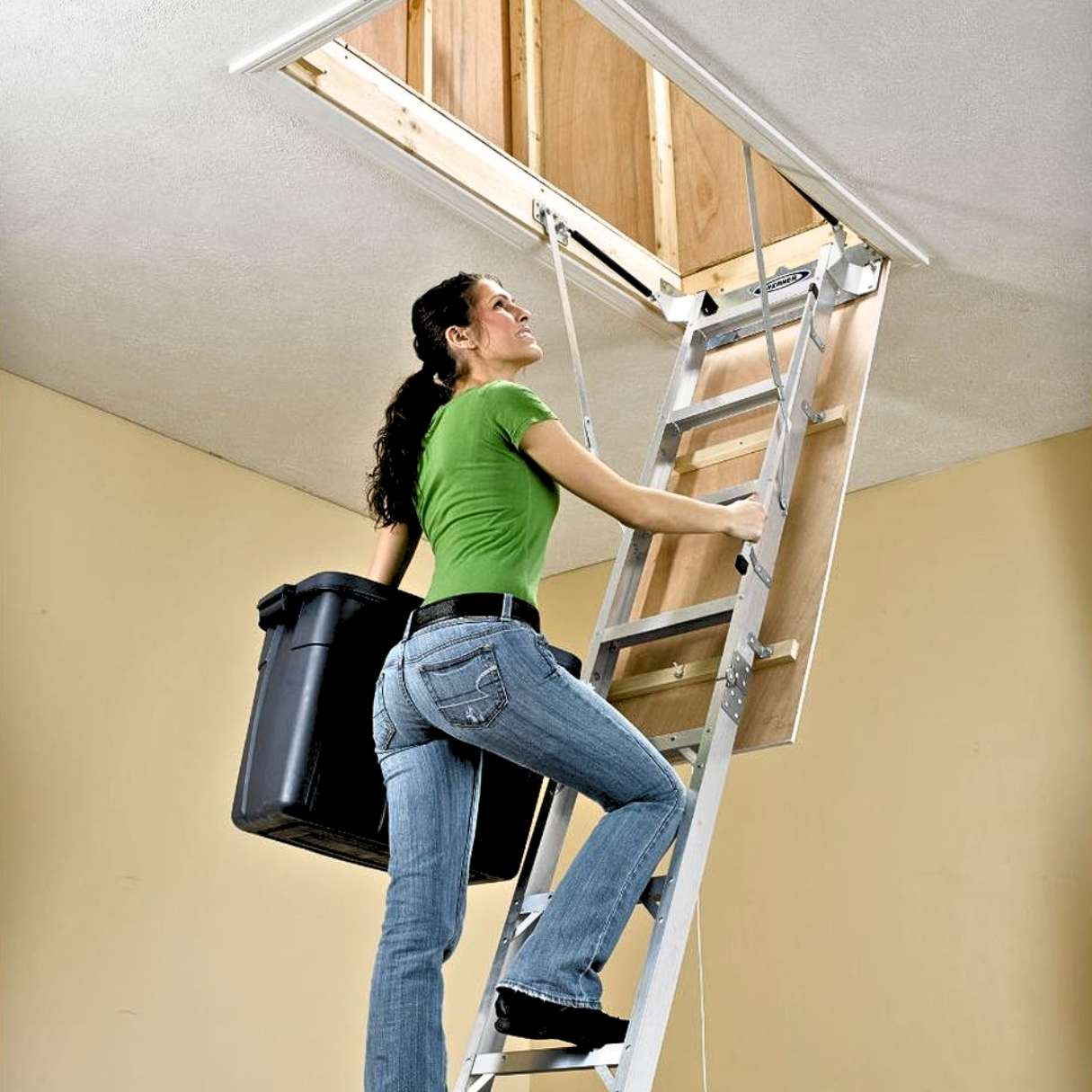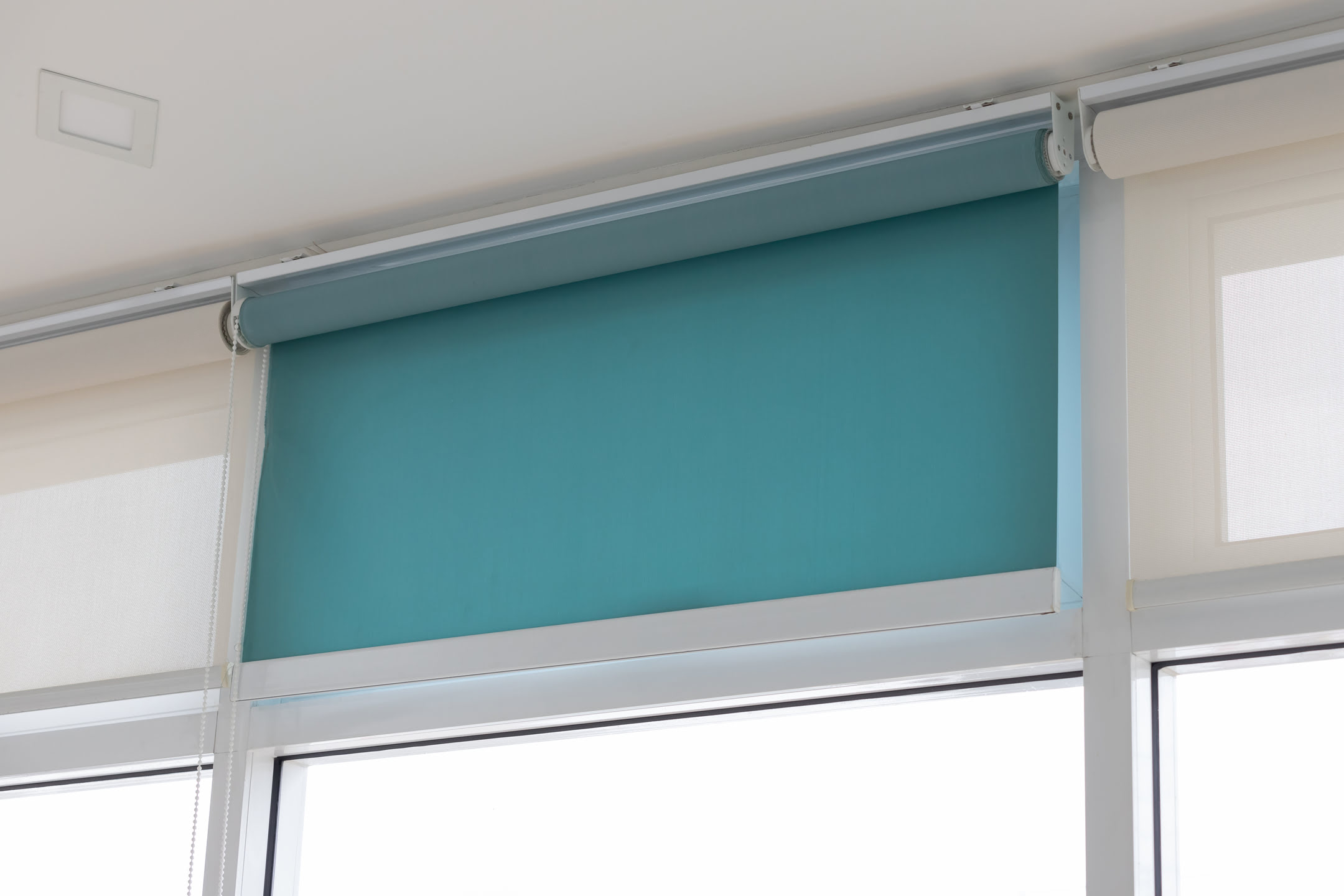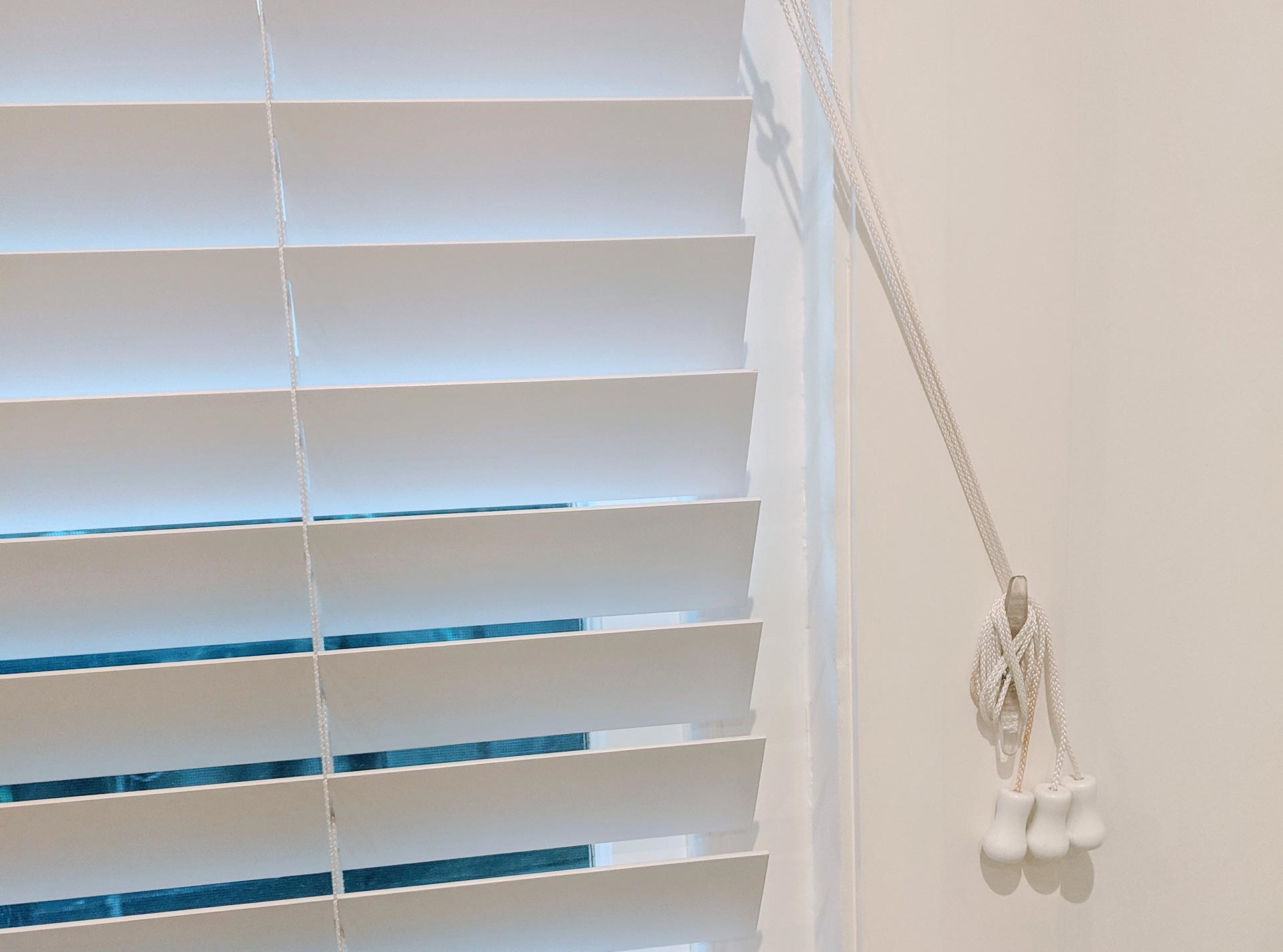

Articles
How To Pull Down Blinds With 3 Strings
Modified: February 24, 2024
Learn how to efficiently pull down blinds using just 3 strings with our informative articles. Upgrade your window treatments today with our helpful guides and tips.
(Many of the links in this article redirect to a specific reviewed product. Your purchase of these products through affiliate links helps to generate commission for Storables.com, at no extra cost. Learn more)
Introduction
Blinds are a popular window covering option that offers both privacy and light control. While traditional blinds are usually operated by a single cord, there are also blinds that come with three strings for enhanced functionality. These three strings provide more control over the positioning and adjustment of the blinds, making them a convenient choice for many homeowners.
In this article, we will explore how to pull down blinds with three strings effectively. Whether you are new to using blinds or simply want to upgrade to a more advanced operating system, we have got you covered. Understanding the blind mechanism and identifying the three strings are the first steps towards mastering the art of operating blinds with ease.
From there, we will dive into detailed step-by-step instructions to help you pull down your blinds smoothly. We will also offer additional tips and tricks to make the operation even easier and troubleshoot common problems you may encounter along the way. So, let’s get started and learn how to make the most out of your blinds with three strings!
Key Takeaways:
- Master the art of operating blinds with three strings by understanding the mechanism, identifying the strings, and following step-by-step instructions. With practice and care, you can effortlessly control light and privacy in your space.
- Enhance your experience with blinds operated by three strings by implementing tips and tricks for smooth operation. From practicing to troubleshooting common problems, you can maximize the functionality and lifespan of your blinds.
Read more: How To Pull Down Blinds With 4 Strings
Understanding the Blind Mechanism
Before we delve into pulling down blinds with three strings, it’s essential to have a good understanding of how blinds work. Blinds consist of slats, often made of wood, PVC, or metal, that can be adjusted to control the amount of light entering a room. These slats are connected by a series of cords or strings that allow for raising, lowering, and tilting the blinds.
Traditional blinds typically have a single cord that operates both the raising and tilting functions. However, blinds with three strings offer more versatility and precise control over the blind’s position. The three strings are typically positioned on the right or left side of the blinds.
The central string is responsible for raising and lowering the blinds. By pulling this string, you can adjust the height of the blinds to your desired level. The two outer strings, on the other hand, control the tilting function. By gently pulling either the left or right outer string, you can tilt the slats to allow more or less light to enter the room.
Understanding this mechanism is crucial in order to effectively operate blinds with three strings. It allows you to have full control over the positioning and adjustment of the blinds, providing you with the flexibility to create the perfect lighting ambiance in your space.
Now that we have a clear understanding of the blind mechanism, let’s move on to identifying the three strings that will empower you to effortlessly pull down your blinds.
Identifying the Three Strings
When it comes to blinds with three strings, the first step is to identify the location of these strings. While the exact positioning may vary depending on the brand and style of blinds, they are typically positioned on either the right or left side of the blinds.
Start by closely examining the blinds and looking for the cords or strings that are attached to the slats. You are likely to find one central string and two outer strings. The central string is usually the longest one, as it is responsible for raising and lowering the blinds.
To identify the two outer strings, look for cords or strings that are shorter in length and positioned on either side of the central string. These outer strings are generally used for adjusting the tilt of the blinds to control the amount of light entering the room.
Once you have identified the three strings, make sure they are in good condition and free from any tangles or knots. If you notice any damage or entanglement, it’s best to repair or replace the strings before proceeding with the operation of the blinds.
Now that we have successfully identified the three strings, we are ready to move on to the step-by-step instructions on pulling down the blinds with ease.
Step-by-Step Instructions
Now that we have identified the three strings, let’s walk through the step-by-step process of pulling down blinds with three strings:
- Locating the Central String: Start by locating the central string. This is the longest cord that is responsible for raising and lowering the blinds. It is usually positioned in the middle of the three strings. Take a moment to familiarize yourself with the central string before proceeding.
- Pulling Down the Blinds: Once you have located the central string, gently pull it straight down. Apply steady and even pressure to ensure a smooth descent of the blinds. You will notice that as you pull down the central string, the blinds will gradually lower to your desired height. Stop pulling when the blinds are at the desired level.
- Adjusting the Blinds: To adjust the tilt of the blinds and control the amount of light entering the room, locate the two outer strings. These strings are used for tilting the slats. Gently pull either the left or right outer string to tilt the blinds. Experiment with the tilt to find the perfect balance of light and privacy that suits your needs.
Remember to handle the strings with care and avoid pulling or tugging too forcefully, as it can cause damage to the blind mechanism. With practice, you will become more comfortable with the operation of the blinds and be able to adjust them effortlessly to your desired position.
Now that you have successfully pulled down the blinds using the three strings, let’s move on to some tips and tricks that will make the operation even easier.
#1. Locating the Central String
The central string is a crucial component when it comes to operating blinds with three strings. It is responsible for raising and lowering the blinds to your desired height. Before you can begin pulling down the blinds, you need to locate the central string.
Start by visually inspecting the blinds and identifying the three strings mentioned earlier. The central string is usually positioned in the middle, between the two outer strings. It is typically longer than the outer strings to ensure ease of operation.
If you are having trouble locating the central string, you can run your fingers along the strings to feel for the longest one. Once you have identified the central string, familiarize yourself with its position and ensure it is free from any tangles or knots that could impede its smooth movement.
Once you have located the central string, you are one step closer to pulling down the blinds with confidence. Remember that the central string is solely responsible for raising and lowering the blinds, so handle it with care to ensure smooth and controlled movement.
By successfully locating the central string, you have set the foundation for the next step in the process: pulling down the blinds. Let’s move on to the next section to learn how to accomplish that smoothly.
When pulling down blinds with 3 strings, start by pulling the middle string first to lower the blinds evenly. Then, adjust the side strings to level the blinds if needed.
Read more: How To Pull Blinds Down
#2. Pulling Down the Blinds
Now that you have located the central string, it’s time to pull down the blinds to your desired height. With the central string in hand, follow these steps to smoothly lower the blinds:
- Ensure that you have a firm grip on the central string.
- Apply gentle and even pressure as you start pulling the string straight down. The blinds will begin to lower gradually as you pull.
- Continue pulling the central string until the blinds reach the desired height. If you want the blinds fully opened, pull the string down until it can’t go any further.
Remember to maintain control over the speed and tension of the pull to ensure a smooth descent of the blinds. Avoid yanking or releasing the string abruptly, as this can cause the blinds to slam down or lose control.
If the blinds are not lowering smoothly, check for any obstructions or entanglements that may be causing resistance. It’s essential to keep the cords and strings untangled and free from any knots to ensure optimal operation.
Once you have successfully pulled down the blinds to the desired height, you are ready to move on to the next step: adjusting the blinds to control the amount of light entering the room. Keep reading to find out how to accomplish this.
#3. Adjusting the Blinds
After successfully pulling down the blinds to your desired height using the central string, it’s time to adjust the blinds to control the amount of light entering the room. This is where the two outer strings come into play.
Follow these steps to adjust the tilt of the blinds:
- Identify the two outer strings, which are positioned on either side of the central string.
- Gently pull either the left or right outer string towards you. This will tilt the slats of the blinds, allowing you to control the angle and the amount of light that enters the room.
- Experiment with the tilt of the blinds to find the optimal balance between privacy and natural light. You can adjust the tilt in small increments until you achieve the desired result.
It’s important to note that the outer strings control the tilting function of the blinds, not the raising or lowering. Always ensure that you are pulling the correct string to avoid any confusion or misalignment.
When adjusting the blinds, be gentle and avoid applying excessive force to the outer strings. A gentle tug should be sufficient to tilt the slats in the desired direction. Additionally, make sure the strings are free from knots or tangles to ensure smooth operation.
By mastering the art of adjusting the blinds using the outer strings, you now have full control over the position and angle of the slats. This allows you to create the perfect lighting ambiance in your space and maximize your comfort.
Now that you have learned how to adjust the blinds, let’s move on to some additional tips and tricks that will help you operate the blinds with three strings more efficiently.
Tips and Tricks for Easy Operation
Operating blinds with three strings can become even smoother and more efficient with the help of these tips and tricks:
- Practice: Take some time to practice operating the blinds with three strings. The more you familiarize yourself with the mechanism and movement, the easier it will become.
- Hold the Blinds: To ensure stability and control while pulling down the blinds, consider using your free hand to hold the bottom rail of the blinds. This will help prevent the blinds from swinging or moving too quickly.
- Keep Strings Untangled: Regularly check and untangle any knots or twists in the strings. This will prevent any snags or hindrances during operation. If necessary, gently comb your fingers through the strings to separate and straighten them.
- Maintain Proper Tension: While pulling down the blinds or adjusting the tilt, maintain a moderate tension on the strings. Avoid pulling too hard or too loosely, as this may result in uneven movement or difficulty in controlling the blinds.
- Take Time to Adjust: When adjusting the tilt of the blinds, make small and deliberate movements. This will give you more control over the desired amount of light and privacy, allowing for precise adjustments.
Implementing these tips and tricks will enhance your overall experience with blinds operated by three strings. It will not only make the operation smoother but also help extend the lifespan of your blinds.
Now that we have covered tips and tricks for easy operation, let’s address some common problems you might encounter while using blinds with three strings and how to troubleshoot them.
Common Problems and Troubleshooting
While operating blinds with three strings is generally straightforward, there can be a few common issues that you may encounter. Here are some common problems and troubleshooting steps:
- Blinds Not Lowering: If you find that the blinds are not lowering when you pull the central string, check for any obstructions or tangles in the strings. Make sure the strings are free and clear of any knots or debris. If the issue persists, it could indicate a problem with the internal mechanisms of the blinds, and it is best to consult a professional for repairs.
- Blinds Not Tilting: If the blinds are not tilting when you pull the outer strings, double-check that you are pulling the correct string on the corresponding side. Ensure that the strings are not tangled or knotted, as this can impede the movement. If the blinds still do not tilt, it could indicate a mechanical issue that requires professional attention.
- Strings Getting Stuck: If you find that the strings are getting stuck or not gliding smoothly, inspect the string guides and pulleys. Dust, debris, or worn-out components can hinder the movement of the strings. Clean the guides and pulleys, and if necessary, apply a silicone-based lubricant to improve the string’s moveme
Read more: How To Pull Down Cordless Blinds
Conclusion
Mastering the art of pulling down blinds with three strings can greatly enhance your control over light and privacy in your space. By understanding the blind mechanism, identifying the three strings, and following the step-by-step instructions, you can effortlessly operate and adjust your blinds to suit your preferences.
Remember to locate the central string for raising and lowering the blinds, and utilize the outer strings to adjust the tilt and control the amount of light entering the room. Handle the strings with care and keep them free from tangles and knots to ensure smooth and efficient operation.
Implementing some additional tips and tricks, such as practicing the operation, holding the blinds for stability, and maintaining proper tension, can further enhance your experience. Always troubleshoot common problems, such as stuck strings or blinds not lowering or tilting, and seek professional assistance if needed.
With the knowledge and techniques acquired through this guide, you are equipped to confidently operate your blinds with three strings and create the ideal lighting ambiance in your home or office.
So go ahead, pull down your blinds, adjust the slats, and enjoy the perfect harmony of light, privacy, and comfort that blinds with three strings offer!
Frequently Asked Questions about How To Pull Down Blinds With 3 Strings
Can I install pull-down blinds with 3 strings by myself?Yes, you can definitely install pull-down blinds with 3 strings by yourself. With the right tools and a little bit of patience, you can easily follow the installation instructions and have your blinds up in no time.What are the benefits of using pull-down blinds with 3 strings?Pull-down blinds with 3 strings offer the benefit of precise control over the amount of light and privacy in a room. The three strings allow you to adjust the blinds to your desired level, making them versatile and convenient for any space.Are pull-down blinds with 3 strings suitable for large windows?Yes, pull-down blinds with 3 strings are suitable for large windows. The three strings provide even distribution of weight, making it easier to raise and lower the blinds without putting excessive strain on the mechanism.How do I clean pull-down blinds with 3 strings?To clean pull-down blinds with 3 strings, you can use a vacuum with a brush attachment to remove dust and debris. For deeper cleaning, you can gently wipe the blinds with a damp cloth and mild detergent. Be sure to let them dry completely before raising them back up.Can I customize the length of the strings on pull-down blinds?Yes, you can customize the length of the strings on pull-down blinds to fit your specific window dimensions. Simply follow the manufacturer’s instructions for adjusting the length of the strings to ensure a perfect fit for your windows.
Was this page helpful?
At Storables.com, we guarantee accurate and reliable information. Our content, validated by Expert Board Contributors, is crafted following stringent Editorial Policies. We're committed to providing you with well-researched, expert-backed insights for all your informational needs.

